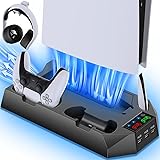ASUS Zephyrus G14 (2025) Review: The Pinnacle of Portable Gaming Power
In 2025, the landscape of portable gaming laptops continues to evolve, with the ASUS Zephyrus G14 emerging as a compelling contender, boasting a mere 1.6 kg (3.5 lb) weight for its thicker configuration. This latest iteration promises exceptional battery life, a stunning OLED display, and enhanced power, yet it comes with its own set of considerations. As the accompanying video highlights, this year’s Zephyrus G14 delivers a unique blend of high-end performance in an incredibly compact 14-inch form factor, making it a standout choice for gamers and creators on the move. Its ability to pack significant hardware into such a light chassis truly sets a new benchmark for portable gaming laptops.
Redefining Portability and Premium Design
The 2025 ASUS Zephyrus G14 immediately distinguishes itself with its premium construction. Featuring a full CNC aluminum chassis, the laptop offers exceptional rigidity and durability, with minimal flex observed in both the keyboard deck and the lid. This all-metal design not only contributes to its robust feel but also aids in overall thermal management, providing a superior tactile experience that justifies its premium classification.
Despite its formidable build, portability remains a core strength. The thicker version of the G14 weighs in at approximately 1.6 kilos (3.5 lb), increasing to just over 2 kilos (4.7 lb) when paired with its 200W charger. This makes it one of the lightest 14-inch gaming laptops on the market, rivaling even the most slender competitors. The thoughtful design extends to practical elements, such as a groove along the front edge, which facilitates effortless one-handed opening of the lid, underscoring ASUS’s attention to user convenience.
Under the Hood: Specifications and Core Components
Powering the 2025 Zephyrus G14 is AMD’s latest Ryzen AI 9 HX 370 processor, representing a significant leap forward in CPU performance. This Zen 5-based chip delivers a 15% higher single-core score and an impressive 38% higher multi-core score compared to last year’s Zen 4 processor, translating to smoother multitasking and more efficient processing for demanding applications. The “AI” designation also hints at enhanced capabilities for future AI-driven tasks and applications, positioning the laptop for emerging technologies.
Graphics duties are handled by NVIDIA’s cutting-edge RTX 5070 Ti or the even more powerful RTX 5080 laptop GPUs. These options are a notable differentiator, as most other 14-inch gaming laptops max out at the RTX 5070, providing only 8 GB of VRAM. The availability of higher VRAM GPUs in the G14, such as the 5070 Ti and 5080, is crucial for playing modern games at high resolutions with demanding textures, ensuring future-proof gaming performance. However, it’s important to note that the 5070 Ti in this compact chassis operates at around 105W (with CPU load), just shy of its theoretical 140W maximum, a necessary compromise for its small form factor, though Dynamic Boost can push it up to 120W.
Memory configurations offer up to 64 GB of soldered RAM. While soldered memory provides faster speeds due to its direct integration with the motherboard, it inherently limits future upgradeability. Storage is managed via a single M.2 PCIe Gen 4 slot, which delivered decent speeds in tests. While this slot can accommodate a drive with chips on both sides, the absence of a second M.2 slot means users looking for more storage will face the inconvenience of cloning or reinstalling Windows.
Connectivity is robust for a portable gaming laptop. It includes fast Type-A and Type-C ports on both sides, with the added benefit of either Type-C port supporting charging. Display outputs offer flexibility between discrete and integrated graphics, allowing users to prioritize gaming performance or quieter operation. The integration of Wi-Fi 7 ensures ultra-fast wireless connectivity, though the video suggests an upgrade to an Intel Wi-Fi card might offer even better speeds for a modest investment.
User Experience: Input, Audio, and Control
The typing experience on the Zephyrus G14 is generally positive, thanks to its chiclet keyboard with a comfortable 1.7 mm of key travel. All keys, including secondary functions, are illuminated by one-zone RGB backlighting, which can be adjusted across three brightness levels. A minor point of contention for some users might be the small arrow keys, which could be cumbersome during intense gaming or navigation.
Complementing the keyboard is a spacious glass touchpad that offers a smooth and accurate tracking experience. Its size is well-proportioned, avoiding accidental touches while still providing ample space for navigation. The only minor drawback noted was the increased pressure required to click closer to the top edge, a design quirk that users may adapt to over time.
Audio quality is a standout feature, with front-facing speakers flanking the keyboard and additional drivers underneath. The sound produced is remarkably clear, exhibiting good bass response and minimal chassis vibration—a significant improvement over many competing laptops. While the Latency Mon results showed some variability during idle tests, the overall audio experience for gaming and media consumption is excellent, reinforcing the laptop’s premium appeal. ASUS also includes “Slash Lighting” on the lid, a customizable white light strip that adds a touch of flair, which can also be disabled for a more discreet look.
System management is handled by ASUS’s Armory Crate software, a comprehensive control panel that allows users to fine-tune performance settings. From toggling between Silent, Performance, Turbo, and Manual modes to customizing CPU and GPU power limits and fan curves, Armory Crate provides granular control. This software also offers essential OLED care options, such as pixel shift, to mitigate the risk of burn-in over extended periods, reflecting ASUS’s commitment to display longevity.
Endurance and Efficiency: Battery Life & Power Management
One of the most impressive attributes of the 2025 ASUS Zephyrus G14 is its exceptional battery life. Equipped with a 4-cell 73 Wh battery, it offers some of the longest run times measured among 14-inch laptops, significantly outperforming many rivals in its class. This is particularly noteworthy given the powerful hardware it houses, making it an ideal companion for extended work sessions or gaming on the go.
ASUS has implemented several intelligent power-saving features to further enhance endurance. The Panel Power Saver, enabled by default, automatically lowers the screen’s refresh rate to 60 Hz when unplugged, conserving energy without user intervention. Additionally, Battery Care mode in the MyASUS software allows users to limit the maximum charge level to 80%, a practice known to improve battery longevity by reducing stress on the cells. For lighter tasks, Eco Mode can be activated via Armory Crate, which disables the power-hungry NVIDIA discrete GPU in favor of the integrated graphics, further extending the unplugged runtime.
The convenience of Type-C charging is also a welcome addition, offering flexibility for users on the move. While a 100W Type-C charger is sufficient for light productivity tasks and general use, it’s crucial to understand its limitations. Under heavy loads, such as intensive gaming or rendering, a Type-C charger cannot sustain peak performance, and the laptop’s battery will gradually discharge, necessitating the use of the included 200W proprietary charger for full power output.
Keeping Cool: Thermals and Performance Dynamics
Effective thermal management is paramount in a compact high-performance machine like the Zephyrus G14. The laptop employs a sophisticated cooling system, featuring a standard cooler with shared heat pipes for both the CPU and GPU, enhanced by Thermal Grizzly liquid metal on the CPU for superior heat transfer. Air is efficiently drawn in through the keyboard and bottom panel, then exhausted exclusively from the rear, preventing hot air from affecting the mouse hand during intense sessions.
Armory Crate’s performance modes offer a spectrum of thermal and acoustic profiles. While Silent, Performance, and Turbo modes manage temperatures adequately by increasing fan speeds in higher settings, Manual mode unlocks the full potential for customization. In Manual mode, users can fine-tune CPU and GPU power limits, temperature targets, and fan curves. This allows for optimal performance tuning, though running with default fan settings in Manual mode can lead to thermal throttling on both components. Maxing out the fans in Manual mode, however, significantly lowers temperatures, providing a substantial cooling advantage at the cost of increased fan noise. The flexibility here ensures that users can strike their preferred balance between raw power and acoustic comfort.
During combined CPU and GPU stress tests, the RTX 5070 Ti GPU was observed running at a respectable 105W with the CPU under load, demonstrating competent power delivery for its size. For CPU-only workloads like Cinebench, the Ryzen AI 9 HX 370 showed impressive gains, achieving a 15% higher single-core score and 38% higher multi-core score than its Zen 4 predecessor. This positions the Zephyrus G14 favorably against other Ryzen 9 370 processors, even outperforming some larger laptops in multi-core tasks.
Gaming benchmarks reveal the G14’s capabilities: Cyberpunk 2077 runs well above 100 FPS at 1080p Ultra and remains highly playable at 1440p. While it may sometimes yield slightly lower average FPS compared to larger laptops equipped with the same RTX 5070 Ti, this is an expected concession for its extraordinary portability. Games like Alan Wake 2 and Black Myth: Wukong also perform admirably at 1440p with high settings, especially when leveraging NVIDIA’s DLSS upscaling technology. The option for higher VRAM GPUs (5070 Ti, 5080) is a crucial advantage for modern games that increasingly demand more memory at high resolutions, ensuring the portable gaming laptop remains competitive for years to come.
Visual Excellence: The OLED Display
The 2025 ASUS Zephyrus G14 boasts a stunning 14-inch OLED display with a resolution of 2880 x 1800. This higher-than-average resolution for a 16:10 panel delivers incredible visual fidelity, though it does necessitate greater GPU power for native resolution gaming. The benefits of OLED technology are immediately apparent: perfect contrast ratios, true blacks, vibrant colors covering an excellent gamut, and the complete absence of backlight bleed.
A minor bug noted in the video involves screen brightness. While ASUS advertises a peak brightness of 500 nits, sustained brightness with Optimus enabled measures around 400 nits. ASUS has confirmed that 400 nits is the expected sustained value, and they are investigating the temporary brightness increase observed when Optimus is disabled. Despite this, 400 nits is a solid result for an OLED panel, ensuring clear visibility in most indoor environments.
OLED panels are renowned for their lightning-fast response times, and the G14 is no exception, with all pixel transitions occurring in less than a millisecond. This translates to an incredibly fluid and blur-free visual experience, a significant advantage for fast-paced gaming. However, OLED panels can be susceptible to burn-in over long periods. ASUS addresses this concern with various “OLED Care” options within Armory Crate, including pixel shift technology that slightly moves displayed pixels to reduce static image retention. For users sensitive to PWM flickering at lower brightness levels, an option is available to mitigate this effect, enhancing comfort during extended use. The glossy nature of the OLED screen, while providing vibrant visuals, can be reflective in bright environments, though the G14’s panel was noted to be less reflective than some other OLED laptops.
The inclusion of Advanced Optimus is a significant quality-of-life feature, allowing the laptop to automatically switch between the integrated and discrete GPUs without requiring a system reboot, thus optimizing FPS in games seamlessly. The classic Mux switch is also present but redundant given the efficiency of Advanced Optimus. Furthermore, G-Sync is available when Optimus is off, and FreeSync is supported by the integrated graphics with Optimus on, ensuring a tear-free gaming experience regardless of the configuration. A 1080p camera with IR for Windows Hello Face Unlock rounds out the display features, providing both security and high-quality video conferencing.
The Verdict: Balancing Power and Portability
The 2025 ASUS Zephyrus G14 stands as a testament to engineering prowess, achieving an exceptional balance of portability, premium build quality, and raw performance. Its CNC aluminum chassis, stunning OLED display, class-leading battery life, and powerful AMD Ryzen AI 9 HX 370 processor coupled with up to RTX 5080 graphics make it a truly compelling portable gaming laptop. The option for higher VRAM GPUs is a distinct advantage for those tackling demanding modern titles at high resolutions, a feature often absent in 14-inch competitors.
However, this compact powerhouse is not without its compromises. Limited upgradeability due to soldered RAM and a single M.2 slot is a consideration for long-term users. The keyboard, while comfortable, lacks per-key RGB lighting and can experience hot spots in the middle under extreme load, though critical gaming areas remain cool. While the fans can be loud at maximum settings, the flexibility of Armory Crate’s performance modes allows for a quieter experience with minimal performance loss. Furthermore, Type-C charging, while convenient for light use, cannot fully power the laptop during intensive tasks without some battery drain.
Ultimately, the Zephyrus G14 delivers a unique and potent package that few other gaming laptops can match. Many of its perceived negatives can be effectively managed or worked around, making its strengths—portability, performance, build quality, and outstanding battery life—shine even brighter. For gamers and creators seeking a no-compromise portable gaming laptop that excels in every facet of mobile computing, the Zephyrus G14 (2025) is an easy and highly recommended choice, setting a new standard in its class.









